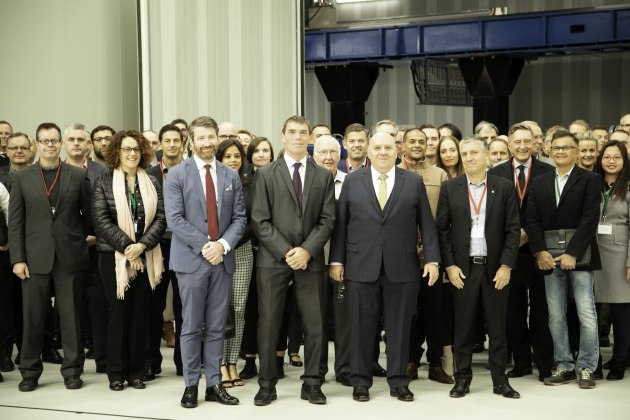Following its announcement on May 14 that it had partnered with Fincantieri Australia, the Melbourne-based metal additive manufacturing company Titomic has unveiled the world’s largest 3D metal printer.
In a ceremony on May 16, the company formally commissioned the 9m x 3m x 1.5m machine, which it says is capable of manufacturing large and complex parts in just minutes. Previously, 3D metal printers have largely only been capable of a material build of just one kilogram in a 24 hour period, whereas Titomic’s machine can manufacture parts of up to 45 kg in one hour.
“Where we differentiate is the speed, we’re up to 45 kg per hour and nothing else comes close to that,” Titomic CEO and CTO Jeff Lang said.
In terms of size, Lang says that the largest 3D metal printing up until now has been around one cubic metre, where his company is now capable of achieving up to 40 cubic metres, or 40 times the size. “It’s an exponential increase in scale and speed and because our process uses cold spray technology, we don’t melt the metal and can fuse dissimilar metals together,” he said.
The machine was manufactured in Melbourne by Advanced Robotics Australia and both it and the now-patented manufacturing process has been developed in partnership with CSIRO. It has its origins in the use of cold spray technology, together with large quantities of titanium powder, to rapidly manufacture large and complex parts.
Cold spray technology has been around for some time, albeit as a means of coating materials using the supersonic deposition of metals, but combining it with the additive manufacturing process has produced what Lang calls a ‘game-changer’ for engineering and industrial design.

According to Lang, Defence and aerospace applications include ballistics coatings, or the manufacture of structures capable of withstanding hypersonic speeds, as well as the next generation of space applications.
“We’re dealing with all the major defence primes around the globe, ranging from missile components and armaments all the way through to land vehicles and naval vessels, and we’re working on the space applications – satellites and space travel – as well,” he said.
“We’re also developing the next generation of smart materials, what we call super alloys and hybrid materials. We’re really at the foundation point of a whole new generation of composite metal fabrication.”


